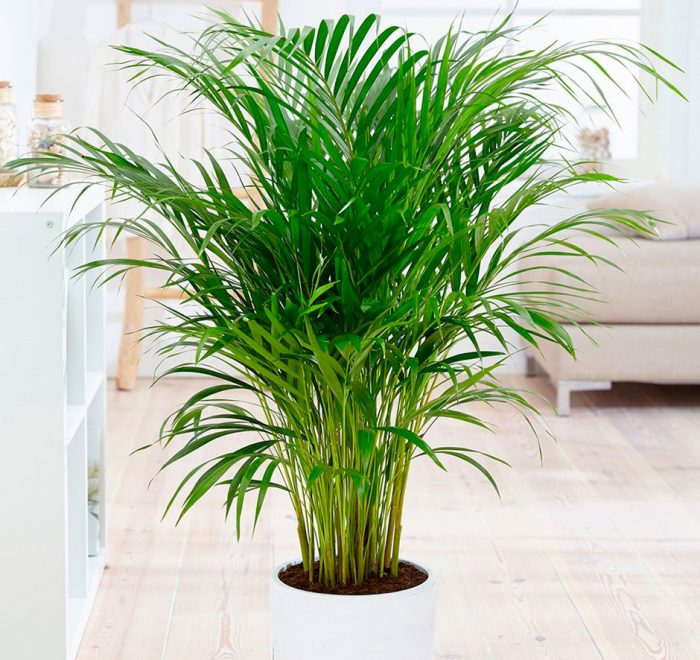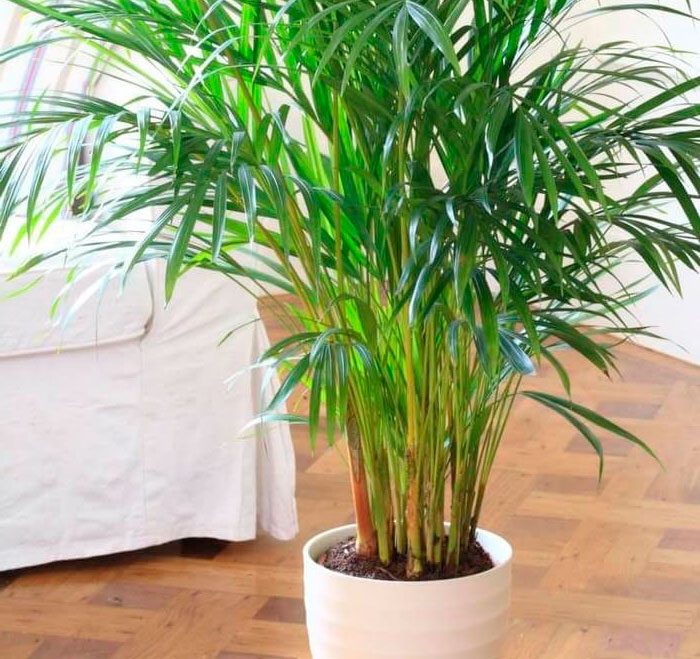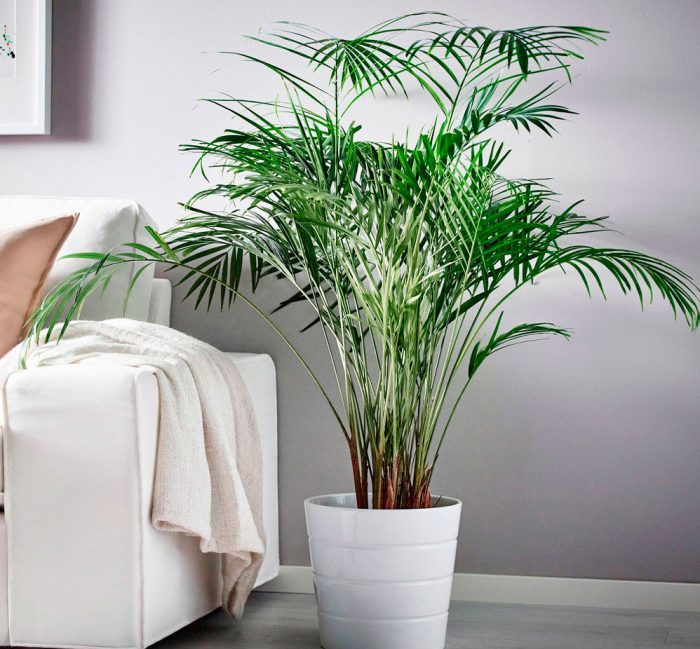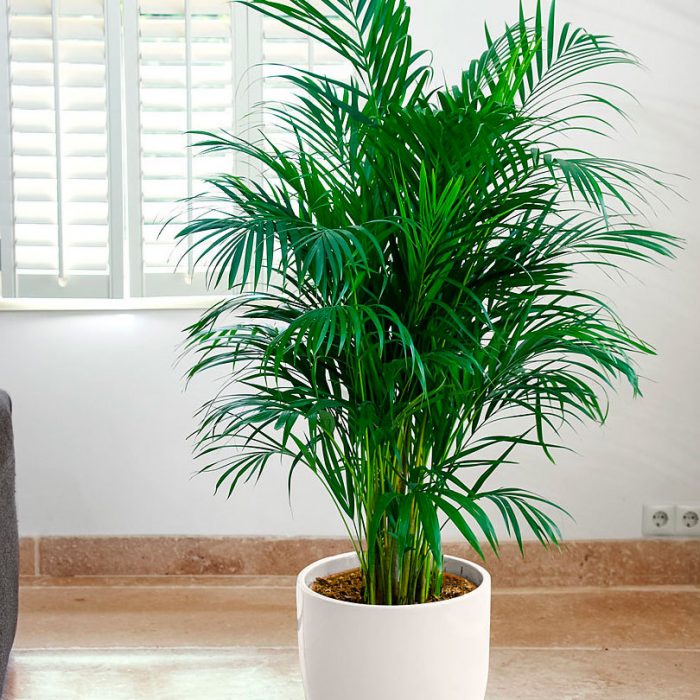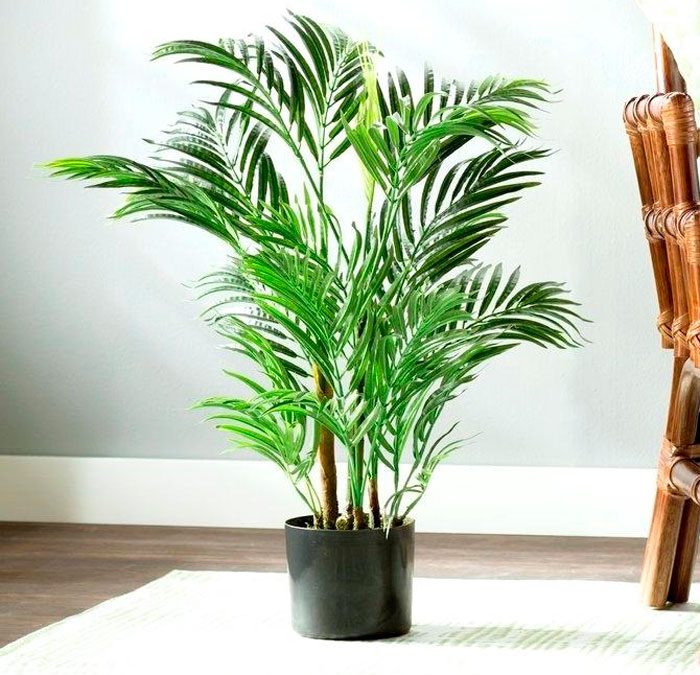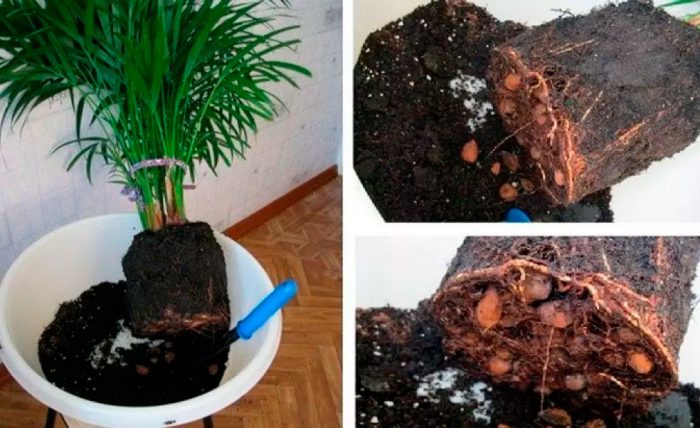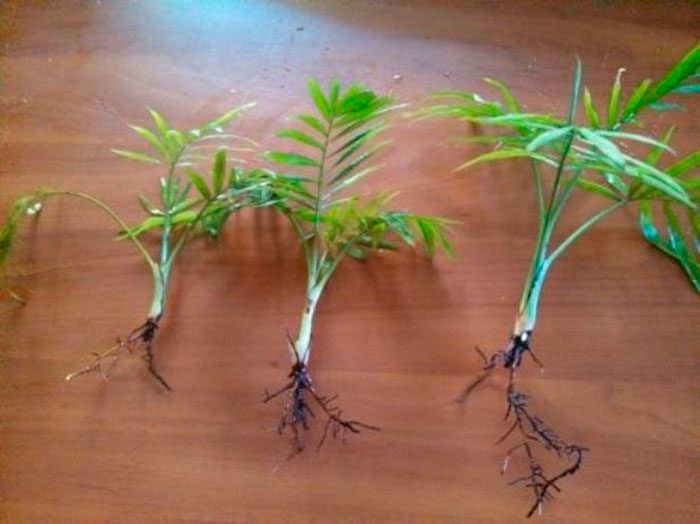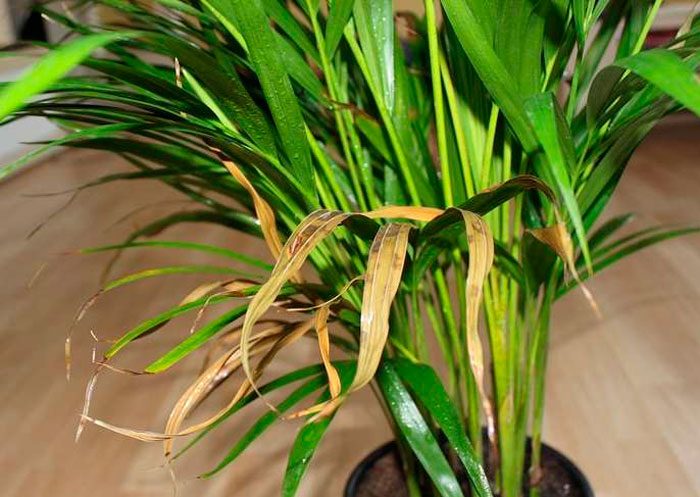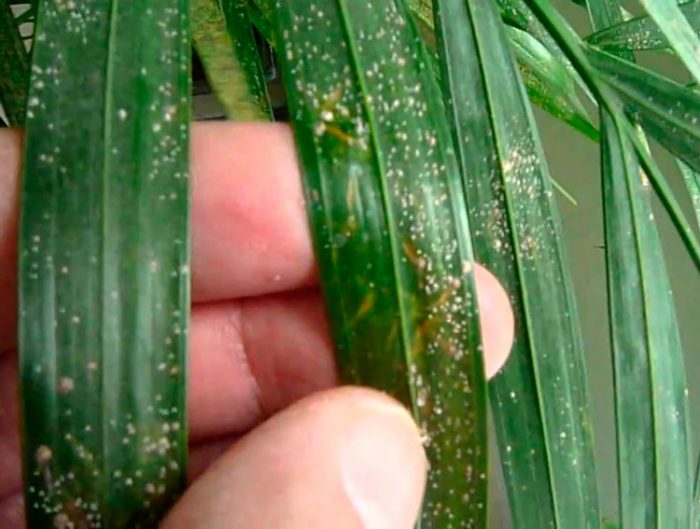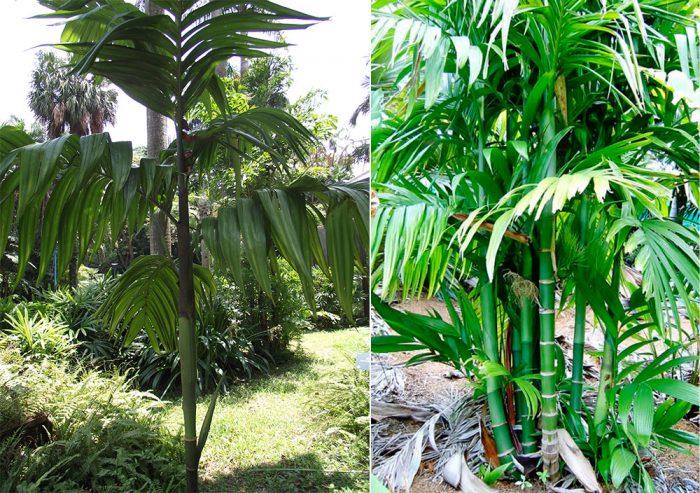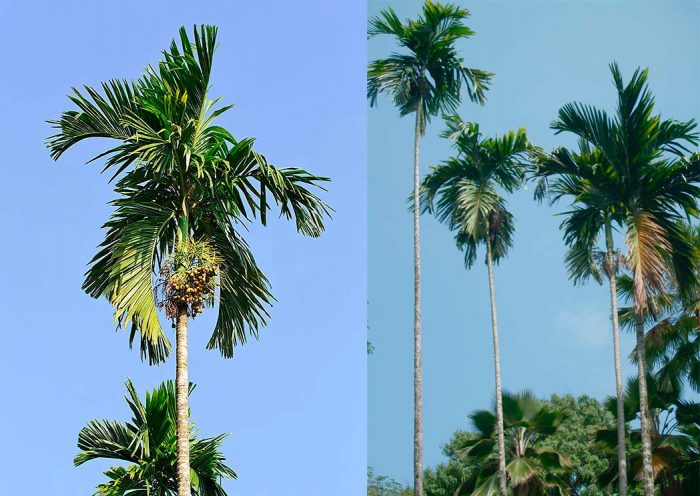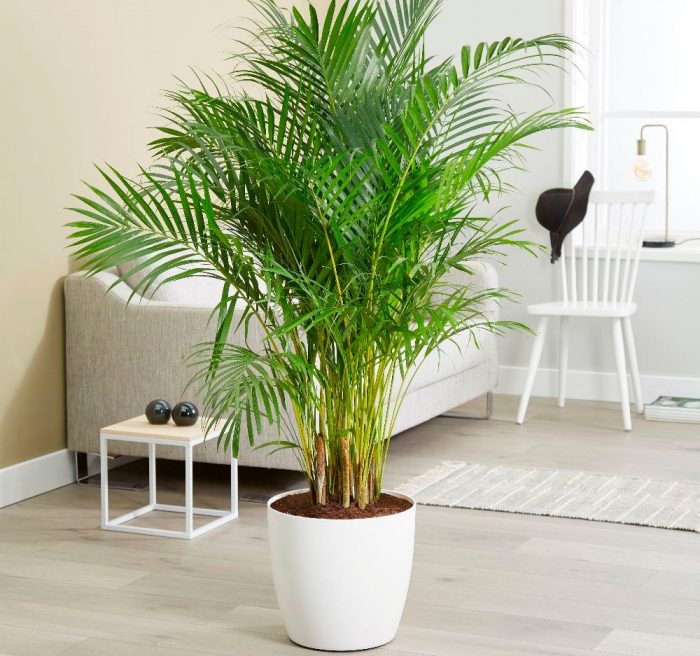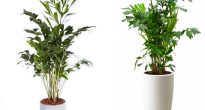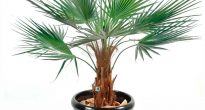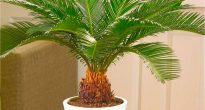The Areca plant belongs to the Palm family. This genus unites more than 40 species, which in nature can be found in the humid undergrowth of tropical regions of Asia from the Solomon Islands, the Philippines and New Guinea to India and Sri Lanka. This genus has a typical species - areca catechu, or betel palm. Under natural conditions, the species can be found in southern China, Southeast and South Asia, East Africa and Western Oceania. And this species is grown throughout the entire tropical zone to obtain its seeds, which have a narcotic effect: first, the seeds are wrapped in betel leaves, and then they are chewed. The seeds contain the alkaloid arecoline, it is used in official medicine to reduce intraocular pressure. It is also used in veterinary medicine as a laxative and anthelmintic. Arecoline bromohydrate is used in the treatment of rheumatism in ungulates. The pigment contained in the seeds of this plant is used to dye cotton products in red and terracotta colors.
Content
Brief description of cultivation
- Bloom... It is cultivated as a decorative deciduous large-sized plant.
- Illumination... It needs bright sunlight, but in the afternoon, the bush needs to be shaded from direct sunlight.
- Temperature regime... In the summer, it is between 25 and 35 degrees, and in the winter, about 15 degrees.
- Watering... The soil mixture in the pot is moistened after its surface dries to a depth of 30 to 40 mm.
- Air humidity... In the cold season, when there are working heating devices in the room, the foliage must be systematically moistened from the sprayer.
- Fertilizer... Areca is fed from April to August once every 15 days, using complex mineral fertilizer for palms. It is also systematically recommended to carry out top dressing on the sheet, using a solution of trace elements for this.
- Dormant period... Not pronounced, but in winter the palm grows and develops very slowly.
- Transfer... While the bush is young, it is subjected to this procedure regularly once a year, and older plants are transplanted about 1 time in 3 years.Very large and old bushes are not replanted; instead, the top layer of the potting soil is replaced every year.
- Reproduction... By dividing the bush and by seed method.
- Harmful insects... Mealybugs, scale insects, spider mites and whiteflies.
- Diseases... Root rot. Areca can lose its decorative effect due to improper care or if suitable conditions for normal growth and development have not been created for it.
Features of the Areca palm
Areca stems, as a rule, are thin with a cylinder of tubular sheaths. The foliage of such a plant is pinnately dissected. During flowering, an inflorescence-cob appears, its upper part consists of male staminate flowers, and the lower part consists of female pistillate flowers. The fruit is a fibrous berry with seeds inside.
Areca palm care at home
Areca palm is a highly decorative plant that is large in size. If you decide to grow such a palm tree, then you should take into account that when it grows up, it will need a fairly spacious room. However, while the bush is young, it can be grown in an ordinary apartment.
Illumination
Areca needs bright sunlight, while the direct rays of the sun do not harm her. In this regard, if necessary, it can be placed near the windows of the south orientation. However, in the summer months at noon (from 11 to 15 hours), the bush must be shaded from the scorching direct rays of the sun. If the bush is young, then it also needs to be protected from direct sunlight, otherwise its foliage begins to curl, and burns form on its surface, and it can also turn yellow and fly around.
Although this palm tree belongs to light-loving plants, it can be grown at any age by placing it next to the northern window, where the lighting is rather scarce. In order for the bush to be symmetrical, do not forget to rotate it 180 degrees around its axis every two weeks.
Temperature regime
The palm tree grows best at an air temperature of 30 to 35 degrees, while the temperature of the soil mixture in the pot should be from 21 to 27 degrees. You should know that such a plant can withstand a two-week heat up to 65 degrees. An adult bush is able to withstand a short drop in temperature to minus 6 degrees, but its foliage will suffer even at temperatures below 0 degrees. If the palm tree stays in the cold for a long time (about 0 degrees), then because of this, it can be severely damaged or even die.
Air humidity
Areca grows and develops normally at the air humidity that is typical for living rooms. But in winter, working heating devices dry up the air, which can cause the decorativeness of a palm tree to suffer: the foliage is shrinking, and its tips dry out. To avoid this, it is recommended to systematically moisten the bush from a sprayer in the cold season.
Watering
It is necessary to moisten the soil mixture in the pot only after the top layer dries out a few centimeters deep. If you water the palm more often, then this can cause rotting of the root system. Since this plant reacts extremely negatively to chlorine, it can only be watered with well-settled water (for at least 24 hours). You can also use filtered water, but rainwater is best for irrigation. Some time after the substrate in the pot has been moistened, be sure to drain the liquid accumulated in the pan.
Top dressing
The indoor areca should be fed regularly. This is done in the period from April to August 1 time in 15 days, and for this it is recommended to use a complex mineral fertilizer for palms. In addition to root, the plant sometimes needs to arrange foliar dressing, for this the foliage is sprayed with a fertilizer solution.
Pruning
Injured or dead leafy ones need to be cut off, but they do this only after the leaf petiole is thoroughly dry. You also need to cut off those leaves that are strongly bent down (below the plane on which the container with the palm tree stands). You should also promptly remove the growing lateral shoots, otherwise the main stem may stop growing.
Areca transplant
Transplant a palm tree only if necessary after its root system becomes very crowded in the pot. You can understand this by looking at the drainage holes at the bottom of the pot, if the roots are hanging from them, then it’s time to transplant the bush. On average, young palms are transplanted every year, and adults are transplanted once every 3 years. Arecs that are too large or very old are not transplanted, they just carefully replace the top layer of the substrate every year in a container about 50 mm thick.
The plant is transplanted in April, when it is just beginning to grow actively. The transplant is carried out by transferring the bush from an old container to a new one, while trying not to destroy the lump of earth that is taken along with the root system. Remember that the new pot must be 50 mm larger than the old one. Suitable soil mixture: well-drained, loose, slightly acidic (pH 6.0-7.8) or neutral. If the composition of the substrate is correct, then water should pass through it in a matter of seconds. In order to make a soil mixture with your own hands, combine humus, coarse sand, leafy and soddy soil in a ratio of 1: 1: 2: 4. If desired, ready-made soil mixture for palm trees can be bought in a specialized store.
A thick drainage layer is made at the bottom of the container, for this you can use pieces of ceramics or expanded clay. Gently transfer the palm tree into a new container, while trying to keep the clod intact. The bush is installed strictly in the center of the container and the free space is filled with fresh earth mixture. After the areca is transplanted, pay attention to its root collar, it should be at the same level as in the old container. The transplanted bush needs watering, and for the first 7 days it must be shaded from direct sunlight.
If during transplantation you find that there is rot on the root system, then it is completely cleaned of soil mixture and all affected areas and dried roots are cut out. Places of cuts must be sprinkled with crushed charcoal, only after that the palm tree is planted in a new container, which is filled with fresh earth mixture.
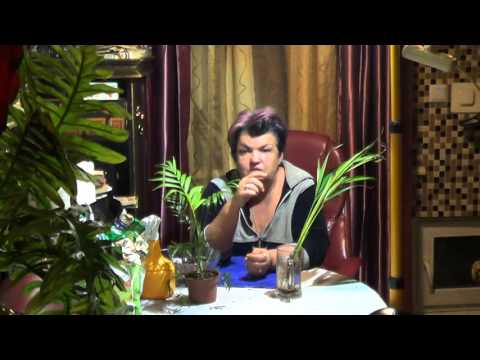

Watch this video on YouTube
Reproduction methods
Growing from seeds
Before sowing areca seeds in the substrate, they are placed in a sulfuric acid solution for 10 minutes. After that, they need to be rinsed well under running water. Fill the cups 2/3 of the seedling soil mixture and plant one seed in each of them to a depth of about 20 mm. The containers are covered with a film (glass) on top and transferred to a well-lit and warm place (from 27 to 30 degrees). If everything is done correctly, then the first seedlings should appear after 1.5-2 months. But if the crops are in a cooler place, then the seedlings will appear later.
Seedlings grow in partial shade, and when their first true leaf plate is formed, they are transplanted into pots. Young plants grown from seeds need regular feeding with a solution of a complex mineral fertilizer (for 1 bucket of water 5 grams), it should be added to the soil mixture every 3 months. The approximate ratio of elements in the fertilizer used: N: P: K = 19: 6: 12.
Dividing the bush
You can divide a bush only if it has several trunks. Remove the palm tree from the old container and shake it well, as a result, as little substrate as possible should remain on the root system, remove the rest of the earth with your hands.Cut the bush into several parts and immediately plant the divisions in separate pots, at the bottom of which a drainage layer is made, and on top it is covered with a layer of sterile earth mixture, consisting of leaf humus, perlite and sod soil (2: 2: 1). Delenki are well watered and transferred to a place that is reliably protected from drafts and direct sunlight. At this time, the delenki need high humidity and coolness (from 20 to 25 degrees). If everything is done correctly, then after half a month they will take root. If rooting is successful, then the foliage of the Areca will restore turgor, immediately after that the bushes should be fed with a solution of complex mineral fertilizer in half the dose recommended by the manufacturer (see the instructions on the package).


Watch this video on YouTube
Diseases and pests
Diseases
Areca can only get sick with root rot, the development of which is facilitated by too frequent watering. You can understand that a palm tree is sick by the following signs: the bush withers, and brownish-red specks form on the surface of its foliage, which eventually increase in size and merge with each other. As soon as such symptoms are found, the plant should be treated as soon as possible with a solution of a fungicide, for example, Discor. If necessary, repeat spraying after 1–1.5 weeks. During the time that the treatment is being carried out, it is impossible to spray the foliage with water or wipe it with a damp sponge.
The palm tree is highly resistant to viruses and bacteria, but problems can arise with it if it is not properly cared for or if it is grown in the wrong conditions. For instance:
- The leaves become curly and orange specks appear on them if there is too little potassium in the soil mixture.
- With a lack of nitrogen, the growth of the bush becomes very slow, and the color of its leaves turns pale.
- The yellowing of the foliage is due to the fact that the palm is very rarely or too poorly watered.
- Dry specks of light color that appear on the foliage are sunburn.
- If the room is too cold, then the color of the foliage will become darker and it will begin to fade.
- When the tips of the leaf plates begin to dry, this means that the air in the room is excessively dry.
- Turbulent and dying bottom plates are a natural process, so there is no need to worry because it happens with all old leaves.
Pests
Mealybugs, spider mites, whiteflies and scale insects can settle on such a palm tree. If you find a white waxy coating on the foliage that looks similar to cotton wool, this means that mealybugs have settled on the bush. These sucking pests feed on plant sap, as a result of which the areca is greatly weakened, and its growth and development are delayed. Insects are removed by hand using a cotton swab moistened with alcohol or soap solution. Then the bush is sprayed with an insecticidal solution.
Shields - they also suck the juice from the plant, while they prefer to hide in the leaf axils and on the seamy surface of the leaves. In those areas where there are bites, spots of yellow or brown are formed, while the tissue around them begins to gradually die off. In order to get rid of such a pest, the bush is sprayed with an insecticidal preparation. However, before processing, remove adult insects from the plant by hand, because they are covered with a dense protective shell, and therefore they are not afraid of pesticides.
Whiteflies are small white moths, similar in appearance to moths. They prefer to hide on the seamy surface of the foliage, if you shake the bush, then the moths will quickly scatter in different directions. On foliage damaged by such a pest, yellow spots form, and it begins to curl.Also, on the surface of the leaf plates, you can find whitefly excrement, which is a sugar bloom, on which a sooty fungus can settle. You can get rid of the moth with the help of insecticidal preparations.
On the palm spider mites settle in the event that the room has very dry air. They are also sucking insects that suck sap from the bush. In areas where there are punctures, dots appear of a pale yellow or light color. You can also understand that this pest has settled on a plant by a thin cobweb on the seamy surface of the foliage. Spider mites are dangerous because their presence is difficult to notice, and they also multiply rapidly. To exterminate them, areca is treated with a special acaricide.
Most often, in the fight against harmful insects, flower growers use insecticidal acaricidal agents such as: Akarin, Fitoverm, Aktellik and Aktaru, as they can destroy any pest. But remember that these drugs contain poisons that are just as dangerous to humans. Therefore, it is necessary to spray the bush with them in the fresh air and do not forget to observe protective measures.
Areca species and varieties
The types of areca that are most popular with florists will be described below.
Areca triandra
Originally view from the Indian peninsula of Malacca. The height of a palm tree is about 300 cm, it has several trunks, each of which reaches no more than 50 mm in diameter. The surface of the trunk is covered with annular scars. The length of straight pinnate leaf plates is about one and a half meters, they include leaves, the width of which is not more than 35 mm, and the length is from 0.5 to 0.9 m. Fragrant flowers are painted white. Fruit length is about 25 mm. This very spectacular palm is cultivated in warm rooms.
Areca catechu, or betel nut
This single-stemmed palm is native to the Malay Peninsula and the Malay Archipelago, which are located in eastern India. The height of the trunk, covered with ring-shaped scars, is about 25 meters, while in diameter it reaches only 5-12 centimeters. Cirrus leaf plates of an arcuate curved shape have a length of about 1.8 meters. They consist of densely spaced leaves, which are about 3 centimeters wide and 45 centimeters long. In the leaf axils, inflorescences are formed, having a length of about 0.6 m, they include white fragrant flowers. Yellowish-red seeds form inside the fruit.
Areca yellowing (Areca lutescens)
Or dipsis yellowing, or yellowing chrysalidocarpus. The native land of the species is Malaysia. The height of a thin straight stem covered with annular scars is about 10 meters. Arcuate-curved pinnate leaf plates in length reach about 150 cm. They include leaves about 3 centimeters wide and up to 35 centimeters long, which are very densely located.


Watch this video on YouTube

